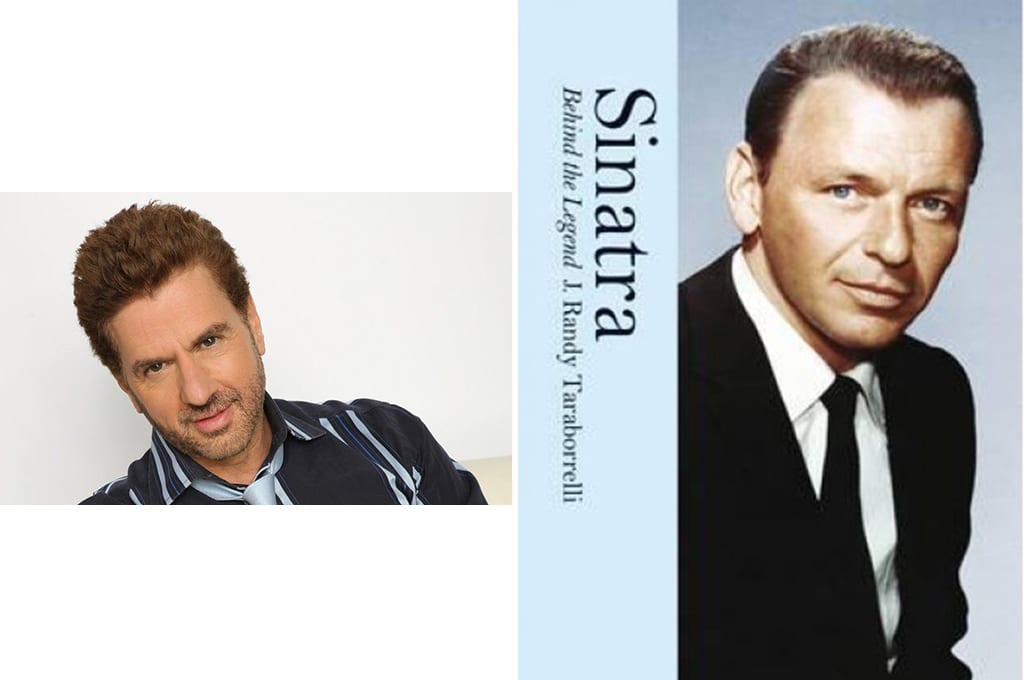Not Quite Totally Frank
To celebrate the 100th birthday of Frank Sinatra, J Randy Taraborrelli has revised and updated his original biography of the 1990s with considerable skill. I approached reading this book with the ghost of Kitty Kelley’s effort still hovering in my consciousness and must say that in most ways this is a preferable book. All the shocking revelations that Kelley presented as so disgusting are there – for example, the story of the abortions performed by Dolly Sinatra; the connections to the mob; the philandering, gambling, and drinking; the psychological abuse of his wives. But instead of being a mere hatchet job this book tries to understand where Sinatra came from, to be sympathetic or in some degree understanding about the weaknesses and foibles of the man, his mother, his friends. In other words, Taraborrelli is simply more balanced in his assessments and conclusions and this makes for a far more interesting book.
Taraborrelli is also is very good at taking us through the Sinatra discography and explaining his approaches to his concept albums. We learn a great deal about his approach to specific songs and the way he worked and also the musicians with whom he liked working. Dealing with the dip in Sinatra’s career in the five years from about 1949 to 1953 or his unquenchable passion for Ava Gardner, dealing with a personality problem that seemed to leave him unable to control the kind of paranoia that made him ditch people if he felt they had betrayed him in any way or listen to the other side of the tale – take the case of Lauren Bacall as a prime example – and his refusal to budge even if he discovered later that he had misunderstood or had incorrect information: Taraborelli portrays a very flawed, egocentric human being who also happened to posses two absolutely major talents. Essentially, Sinatra did do it his way; and if you could not abide his way or you questioned it at all, you were simply ousted.
Above all, Sinatra was a great singer and entertainer; and Taraborelli talks about his approach to a song, its lyrics, his phrasing with real understanding. He is also very perceptive about the reactions of various audiences. But almost as great as his singing was Sinatra’s talent for acting. It was his acting as Maggio in the film of From Here to Eternity that helped consolidate his return to a top ranking career in the 1950s after a few years in the wilderness as a singer as well; and this biography goes into his roles in such films as Suddenly, The Man with the Golden Arm, Some Came Running and The Manchurian Candidate, or even lighter fare such as High Society, The Tender Trap, or Ocean’s 11. Sinatra was also quite impressive as a producer and director when he tried his hand at those jobs.
What comes across is that Sinatra was a superb, professional and committed entertainer; and that he was himself proud of the assessment that when he sang he was always totally honest. It is not that he was dishonest in his personal life, despite the philandering. He was always very open about his approach and his beliefs and he always seemed to say what he was thinking. But when he sang or acted he became someone of great empathy and he managed to suspend his raging ego so that he always served his art.
The weakness of this book, for me, is that it does not go enough into the mind set, thinking or approach of Sinatra as an artist. We do not really get a sense of him preparing his songs or his roles. There are hints about it; but essentially this is the book about his daily life, his love affairs, his links to the Mob and his really complex personality. It is also good that one comes away from this telling of the story with a strong sense of Nancy Sinatra Sr and Jr, Tina Sinatra, Frank Junior, all four wives and several of the girlfriends, his closest and longest serving friends, lawyers and agents. The book is well written and sticks to its brief admirably. Some of the details – like a brief plan to marry Marilyn Monroe and save her from herself – came to me as a surprise. But there are no compelling new insights into what made Sinatra so attractive to his women and his friends; what made him such fun to be with; what his charm was. We are told it existed and we get a lot of tales about its impact. But it is still a mystery how this man turned himself into one of the great interpreters of American song of the 20th century as well as, at times, a top class actor. And I would also love to know what happened after a certain point that made him shy away from the kind of intense and harrowing roles he had undertaken in the 1950s. Or what it was in his personality rather than just in his fame and talent that attracted the long-term loyalties of such a disparate group of people.
Still, if you are looking for a Frank Sinatra biography, this is definitely one of the best and most informative about his life – and it is certainly a whole lot less waspish or nasty than some of the other books about Sinatra you can get.
And, to tell you the truth, it made me want to listen to his recordings again and run the DVDs of several of his films. I am convinced about the talent. I want to experience it again. But I would not particularly have wanted to meet the man, though I am told by Taraborelli that he was a very winning companion if he wasn’t bearing a grudge against you.

